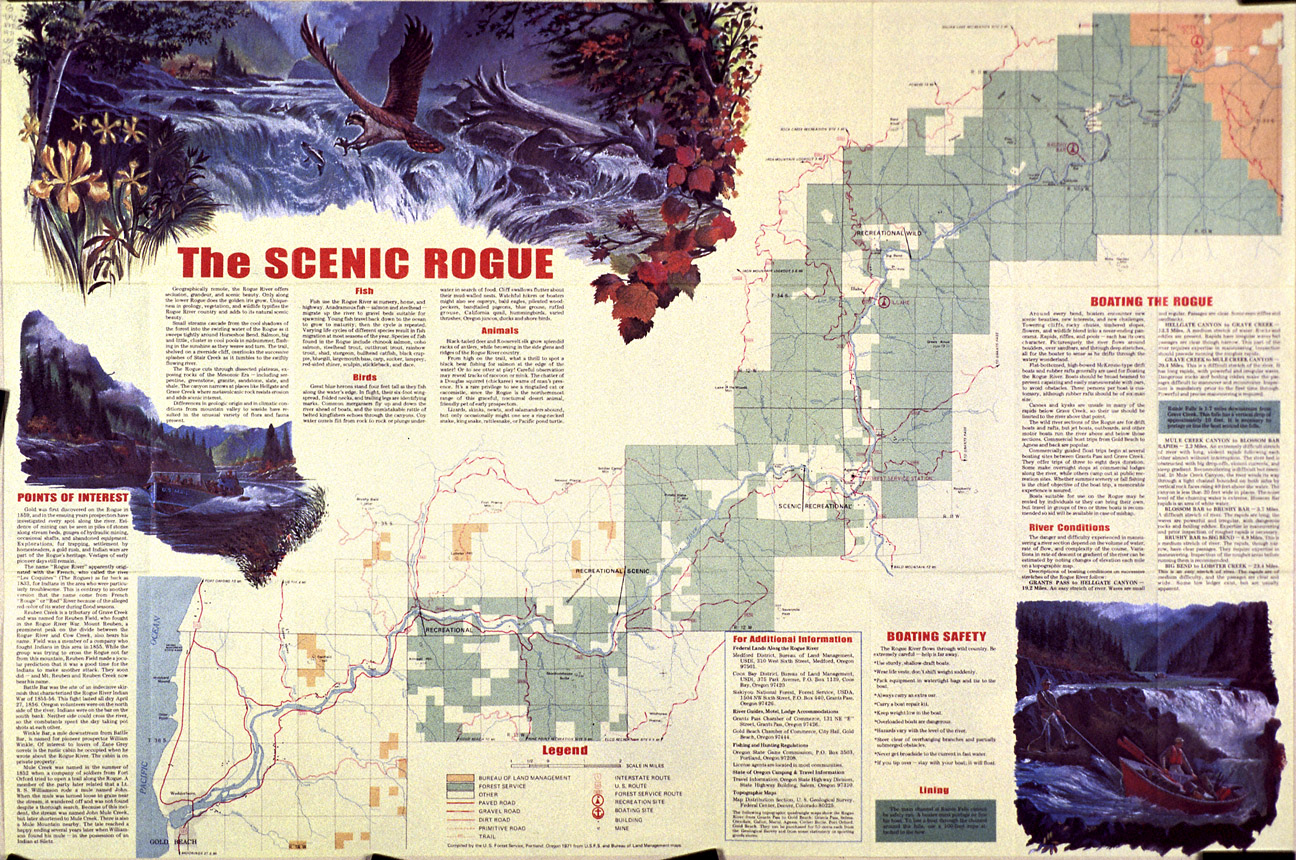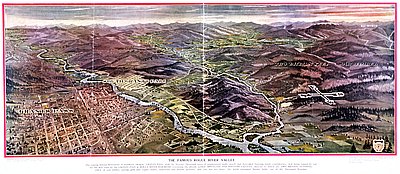- Catalog No. —
- OHS Map 513S
- Date —
- 1971
- Era —
- 1950-1980 (New Economy, Civil Rights, and Environmentalism)
- Themes —
- Environment and Natural Resources, Government, Law, and Politics, Sports and Recreation
- Credits —
- Oregon Historical Society
- Regions —
- Coast Southwest
- Author —
- US Forest Service / US Bureau of Land Management
The Wild and Scenic Rogue River
American attitudes toward wilderness underwent an important change over the course of the twentieth century. In the 1930s and 1940s, Aldo Leopold, Robert Marshall, and other well-known conservationists began to argue that not only were undeveloped areas of high ecological value, they were also of high social value since they provided an outlet for increasingly urbanized populations to renew their relationship with nature.
Two important pieces of federal legislation passed in the 1960s reflect this revaluing of wilderness. Both the 1964 Wilderness Act and the 1968 Wild and Scenic Rivers Act are premised on the idea that wild places are ecologically and socially valuable and therefore worthy of protection from unchecked development. Unlike the Wilderness Act, however, the Wild and Scenic Rivers Act recognized that partially modified areas were also worthy of protection. It divided rivers and surrounding riparian lands into three categories—wild, scenic, and recreational—based on the degree of development.
Southwestern Oregon’s Rogue River was one of eight rivers to be protected under the original 1968 Wild and Scenic Rivers Act. More than eighty-four miles from the mouth of the Applegate River downstream to the Lobster Creek Bridge are protected under the act, 33.6 miles of which are considered wild, 7.5 scenic, and 43.4 recreational.
Further Reading:
Palmer, Tim. Endangered Rivers and the Conservation Movement. Berkeley, Calif., 1986.
Written by Cain Allen, © Oregon Historical Society, 2003.

